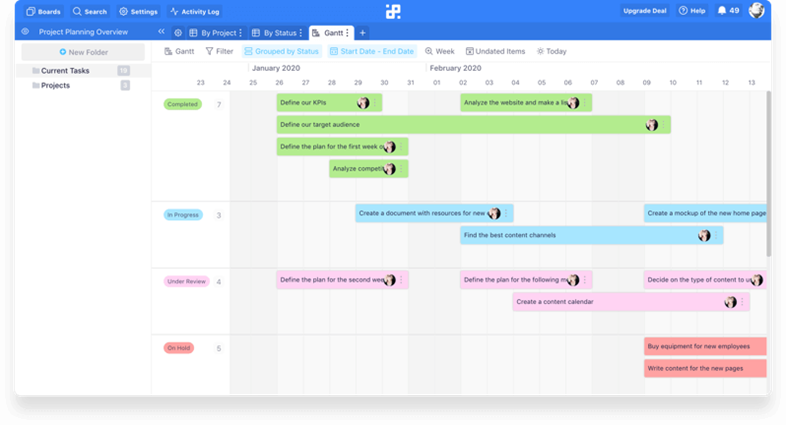With more and more workers choosing to work remotely, it can be a challenge for managers to oversee teams that are not just spread across different cities and states, but often, different countries. With this in mind, here are my 5 expert tips to help you manage your virtual teams heading into 2023.
If the pandemic proved anything to us it is that when set up and managed well, remote work can be just as productive as in-office work while saving your business in traditional office expenses and overhead. However, to succeed it requires management that is willing to support their team by providing them with the necessary tools, processes, and policies that will empower them to be successful in their roles. By following these 5 key tips, you’ll quickly discover that your virtual team is providing real-world results that you can take to the bank.
Clear Expectations
Clear objectives, deliverables and timing are the most important element. The challenge with remote workers is that it exacerbates the challenge in delegating, accountability, and communication of measurable, timely and well understood goals. We use loose descriptions and rarely request reiteration for clarity and often fail to have a specific delivery date(s) along the length of the project. A book I recommend is If You Want It Done Right, You Don’t Have to Do It Yourself! for managers and their people so that there is a process for both to follow.
Equip Them to Succeed


While you always want team members to work with the highest-quality technology possible with a virtual team that becomes even more important. In fact, the entire concept of remote work depends upon it. So, whether a member of your team needs a specific piece of hardware, software, or both, make sure they have access to the technology they need to reliably and consistently perform their job at a high level.
Virtual team success starts and ends with the software used for communication, project management, and employee activity tracking and reporting. My favorites:
Team Communication
Project Management
Productivity & Content Creation
I recommend reviewing each of these services and determining which makes the most sense for your team. In general, there are no wrong answers among these options so focus on the details that make each of them unique, how your teams collaborate and the synergy with your work flows, and pricing structure.
Choosing the Right Communication Method for the Team and Task
One point I like to make to my executive clients looking to improve their internal communication among their virtual teams is this: There should be almost no email in your company. Why? Because it’s the 21st century version of sending a letter via the post office: it’s slow, clunky, and unreliable. Emails take a long time to write, team members may not see and read them in a timely fashion, and they might not be received by everyone who needs the information. For your company, phone, video, and chat should be the principal methods of connecting, as they are instant feedback (or close to it) methods of communication, allowing team members to convey urgency and have a more viable conversation. That way, results are more rapid and appropriate for the task and people will feel they are working together more and getting input from their team.
Ultimately, not every communication channel works for every type of communication that needs to happen within your organization, clients and customers. Taking the time to identify what each communication channel should be used for will go a long way to eliminating confusion or miscommunication while adding structure and clarity to your communication processes.
For example, using email for more official communications makes sense because it can be more formal than other methods and provides a written record and history of communication between relevant parties. Live chat is best used for the exchange of everyday information and answering quick questions with equally quick responses. Video conferences and conference calls should be utilized for more detailed discussions that require further explanation and/or input from multiple team members that would either be inappropriate for or take too long to handle via chat or email.
Define a clear structure for how and when you want different types of communication used when it comes to internal and external communication to maximize each.
Schedule Regular Online Meetings
One of the most important things you can do to help manage a virtual team and keep it running smoothly is to schedule regular meetings. These meetings are not only important to have from an organizational perspective but also to help generate a sense of teamwork and camaraderie among your organization which can help build trust among your team and help boost talent retention.
Internally, online meetings should be leveraged to communicate broad organizational goals and status updates, establish individual team goals and progress, and provide your teams with the opportunity to discuss and explore their challenges and their solutions. Externally, online meetings can be used to stay in touch with and communicate progress and plans with clients and customers, keeping them closely looped in and managing expectations.
While some teams function fine by having a long weekly status meeting, other teams or projects might flow best with a short, daily stand-up. Let composition of your team and its goals and determine the right cadence and frequency of your meetings.
Recognize Achievements


A common challenge I see in managing remotes team is that due to the isolation, members can sometimes feel that their accomplishments are not being seen or recognized. As such, it is more important than ever to be sensitive to this and look for opportunities to not only acknowledge an employee’s contributions to the team and the business and reward them when appropriate. Public recognition is great if you know the individual is receptive to wide recognition. In my experience, a little bit of public praise can go a very long way in building confidence and loyalty among your teams. I recommend utilizing your team video calls for these moments. Nothing communicates the positive spirit behind praise like being able to hear the voice and see the face of those offering praise coupled with the nods and applause of others.
However, while recognizing achievements is always great, it’s also important to keep in mind that not everyone likes public praise. Know your people and you need to know what resonates for them individually to feel appreciated. While many will appreciate public recognition, some may feel separated for the team if called out publicly for praise and hurt their morale. Be sure you know how they like to be valued for their work and meet them where they are.
Push Work-Life Balance
As with any in-office team, can’t be expected to be available or on-call all hours of the day. Your virtual team needs time to rest and reset or they become high risks for burnout. Research has shown that 66% of American full-time employees do not strongly believe they have a good work-life balance. 60% blame overbearing or bad bosses and 39% are cite consistently being called upon to work beyond standard business hours. Yet for employees with a good work-life balance, productivity increases, absenteeism falls, and physical and mental health and wellness improves, and motivation to work rises (source 1, source 2). Encouraging a good work-life balance is good for your employees and good for your business.
As a manager or employer, do your best to promote a positive work-life balance among your team by:
- Minimizing the frequency in which you call them after the workday ends.
- Not expecting them to respond to emails at 2:00 am and encouraging them to avoid doing so for their own health and wellness.
- Respecting the time and effort put forth by your team during the business day.
In doing so, you will not only help your team function at a high level, but also instill a sense of mutual respect and trust that you have their best interests at heart.
Summing Up
If you would like to learn more about my techniques or take your leadership to the next level through our executive coaching programs, let me know. Coach4Execs has the tools to help you achieve growth and exceed your own expectations. Find out what one executive coaching call can do for you!
Georganne Goldblum,
CEO of Coach4Execs





